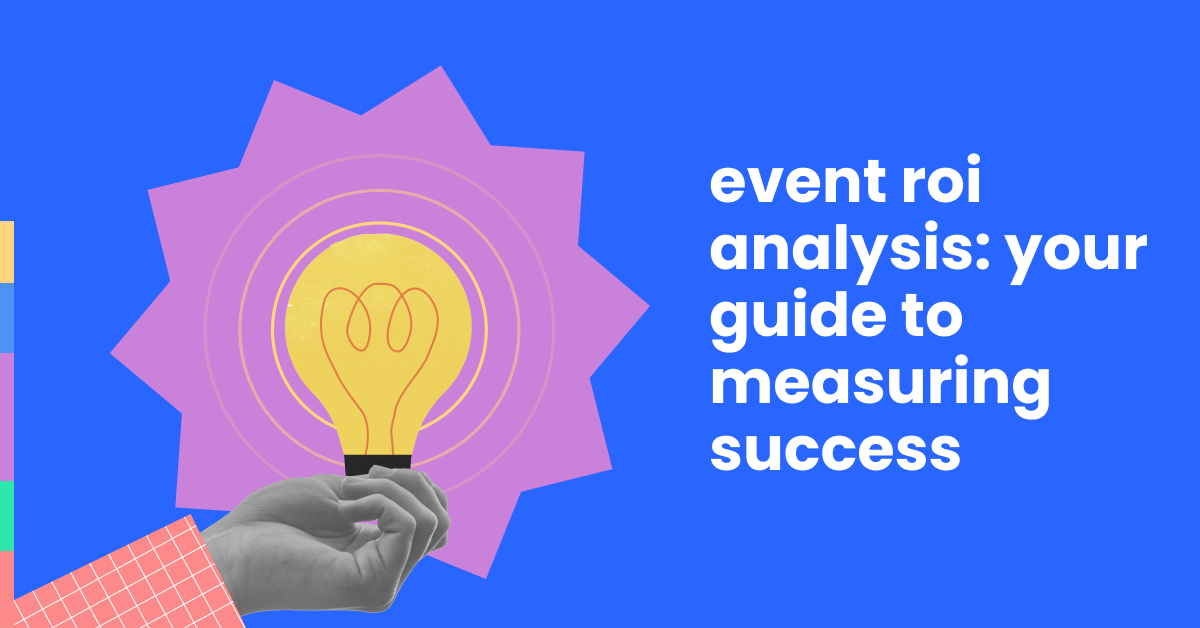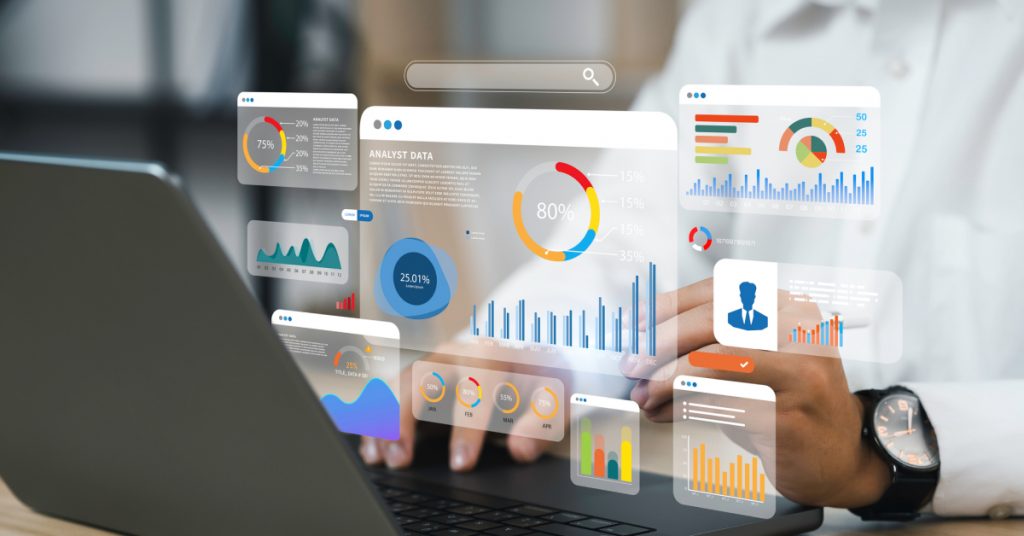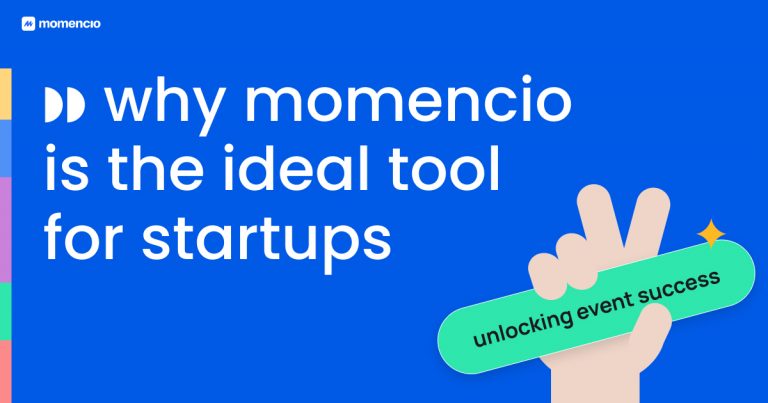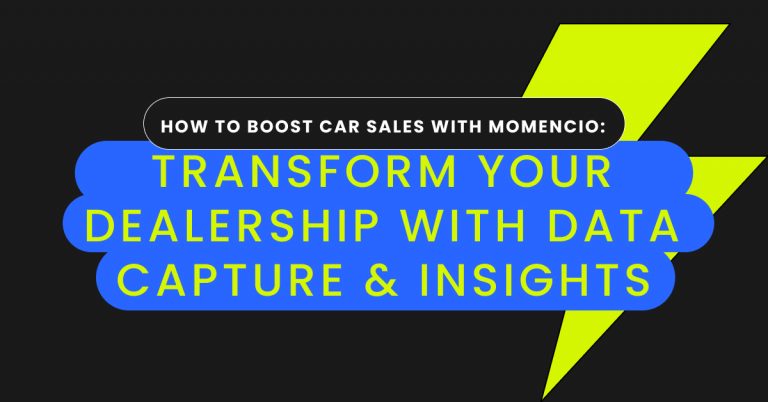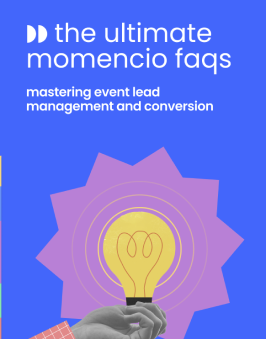In the dynamic world of event marketing, understanding and maximizing event ROI (Return on Investment) stands as the linchpin of strategic success. For VPs of Marketing, Event Managers, and Content Marketing Managers, the ability to conduct a comprehensive event ROI analysis is not just a competitive edge—it’s a necessity. With stakes high and budgets tighter, the imperative to justify every dollar spent on events has never been more critical.
This guide delves into the essence of event ROI analysis, providing a roadmap for professionals aiming to measure and enhance the impact of their event marketing efforts. From setting clear objectives to leveraging cutting-edge technologies like momencio for data collection and analysis, we cover the strategies that can transform insights into actionable plans for future success.
Event ROI Analysis: Understanding Event ROI
Definition and Significance
Event ROI (Return on Investment) analysis is the compass that guides marketers in evaluating the effectiveness of their event marketing efforts. It quantifies the value generated from events in comparison to the investments made. In the realm of event marketing—where the amalgamation of brand exposure, networking opportunities, and direct sales opportunities converge—ROI analysis offers a clear perspective on an event’s contribution to business goals.
For VPs of Marketing, Event Managers, and Content Marketing Managers, the significance of event ROI extends beyond mere numbers. It encapsulates the ability to justify marketing expenditures, allocate budgets wisely, and strategize future events with precision. It’s a critical measure that underscores the importance of aligning event objectives with broader business goals, ensuring every event is an opportunity for meaningful engagement and tangible returns.
Components of Event ROI
The complexity of event ROI lies in its multifaceted components. It’s not just about financial returns; it encompasses various metrics that contribute to overall business success:
• Direct Sales and Lead Generation: The immediate and most quantifiable aspect, including sales closed at or directly attributable to the event and the number of qualified leads generated.
• Brand Awareness and Exposure: Difficult to quantify but crucial; this includes media mentions, social media engagement, and overall visibility to new potential customers.
• Customer Engagement and Loyalty: The depth of interactions with existing customers, potential for upselling, and impact on customer retention and loyalty.
• Market Intelligence: Insights gained about competitors, industry trends, and customer preferences that can inform strategic decisions.Setting the Stage for Successful Analysis
Pre-Event Planning and Goals Setting
The foundation of impactful event ROI analysis is laid long before the event takes place. It begins with meticulous pre-event planning and precise goal setting. Objectives should be SMART: Specific, Measurable, Achievable, Relevant, and Time-bound. Whether it’s increasing the customer base by a certain percentage, generating a specific number of leads, or enhancing brand recognition, having clear targets is crucial for later analysis.
Tools and Technologies for Data Collection
Technology plays a pivotal role in the modern marketer’s arsenal for event planning and analysis. Tools like momencio not only facilitate seamless lead capture but also enrich this data, providing a deeper understanding of each interaction. The integration of such platforms with existing CRM and marketing automation tools ensures that data flows seamlessly across systems, providing a comprehensive view of each prospect’s journey.
Measuring Event ROI
Key Performance Indicators (KPIs) to Track
Identifying the right KPIs is essential for a meaningful ROI analysis. These indicators might include the following:
• Lead Quality and Conversion Rates: Measures the effectiveness of the event in attracting high-quality leads and converting them into customers.
• Customer Acquisition Cost (CAC) vs. Lifetime Value (LTV): Evaluate the cost of acquiring a new customer through the event against the projected revenue they will generate over time.
• Engagement Metrics: Tracks the level of interaction with the brand during the event through booth visits, session attendance, and active participation.
Calculating Your Event’s ROI
Calculating ROI involves comparing the total revenue or value generated from the event against the total costs incurred. The basic formula is:
Understanding and applying this formula within the context of your specific event goals and metrics allows for a nuanced analysis of your event’s performance.
Event ROI Analysis: Analyzing and Interpreting Data
Once the event concludes, the focus shifts to analyzing and interpreting the gathered data. This phase is critical for understanding the effectiveness of your event and making informed decisions for future improvements.
Understanding the Data
Interpreting event data involves more than just looking at numbers. It requires a deep dive into what these numbers represent, identifying trends, and understanding attendee behavior. For instance, high engagement rates at your booth might indicate that your presentation or product demos were compelling. On the other hand, if lead conversion rates are lower than expected, it might signal a need to reassess the lead qualification process or the follow-up strategies employed post-event.
Making Data-Driven Decisions
The ultimate goal of event ROI analysis is to make data-driven decisions that enhance the effectiveness of future events. This might involve strategic changes such as targeting different audience segments, modifying the event marketing mix, or investing in new technologies to improve lead capture and engagement. Tools like momencio not only provide the data but also the insights needed to make these decisions, offering a clear direction for future event strategies.
Strategies for Maximizing Event ROI
To maximize the ROI of future events, consider implementing the following strategies:
Pre-Event Strategies:
• Target Audience Identification: Use data from past events to refine your target audience, ensuring your marketing efforts are directed toward the most promising prospects.
• Goal-Oriented Planning: Set clear, measurable objectives for each event, aligned with broader marketing and business goals.
• Engagement-Driven Content: Develop content and presentations that resonate with your audience, driving engagement and interaction.
During Event Strategies:
• Effective Lead Capture: Utilize tools like momencio for seamless lead capture and enrichment, ensuring no potential lead slips through the cracks.
• Engagement Tracking: Monitor engagement in real-time, allowing for immediate adjustments to maximize attendee interest and participation.
• Personalized Interactions: Employ technology to deliver customized experiences to attendees, enhancing their connection with your brand.
Post-Event Strategies:
• Timely Follow-Up: Leverage automated follow-up processes to maintain momentum with leads, using personalized content to foster relationships.
• Data-Driven Insights: Analyze post-event data to understand what worked and what didn’t, using these insights to refine your approach for future events.
• Continuous Engagement: Develop a strategy for ongoing engagement with leads, using platforms like momencio to nurture these relationships until they are sales-ready. Dive into the 10 proven strategies for boosting event ROI and engagement.
Leveraging Technology for Enhanced ROI
Technology plays a pivotal role in maximizing event ROI. Technologies like momencio play a crucial role in maximizing event ROI, as highlighted in this Events Industry’s Top Marketing Statistics, from lead capture and data enrichment to engagement tracking and automated follow-ups. By integrating such technologies into your event marketing strategy, you can ensure a more efficient process, a better understanding of your audience, and, ultimately, a higher ROI.
FAQs
- How do I calculate the ROI for an event? Calculate event ROI by subtracting the total event costs from the total revenue generated and then dividing by the total costs. Multiply by 100 to get a percentage.
- What are the critical metrics for event ROI analysis? Key metrics include lead conversion rates, attendee engagement levels, cost per lead, and overall revenue generated from the event.
- Can technology like momencio improve event ROI? Yes, technologies like momencio streamline lead capture, enhance engagement, and provide actionable insights, significantly improving event ROI.
- How necessary is a post-event follow-up in event ROI analysis? Post-event follow-up is crucial for converting leads into sales, directly impacting the overall ROI of an event.
- How can I use data from past events to improve future event ROI? Analyze past event data to identify trends, understand attendee behavior, and refine your strategies for target audience, content, and engagement for future events. Maximizing your event ROI requires more than just a great strategy; it demands the right tools and technologies to bring your vision to life.
Discover how momencio can transform your event marketing efforts. Book a demo today and take the first step towards unlocking the full potential of your events.
Event ROI analysis is an indispensable tool for marketers aiming to quantify the success of their event marketing efforts and make informed decisions for future events. By setting clear objectives, leveraging the right technologies, and adopting a data-driven approach, you can significantly enhance your event ROI. Embrace these strategies and tools like momencio to ensure your events are not only memorable but also maximally effective in driving your business goals forward.
